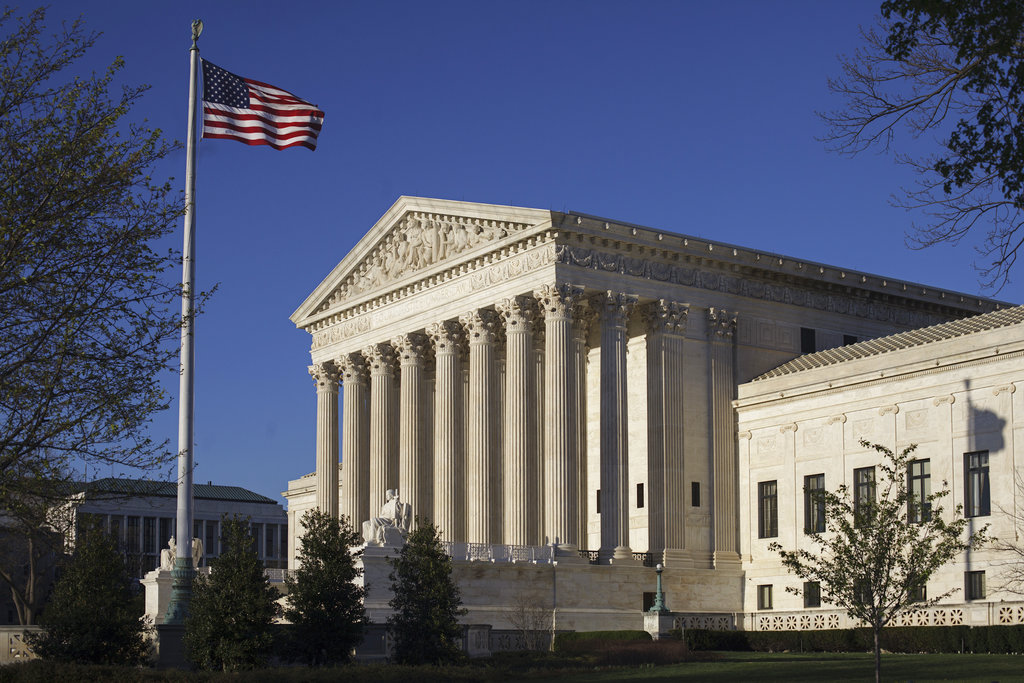Other Voices: Supremes’ gerrymander wimp-out
Published 12:05 am Monday, July 2, 2018

- The U.S. Supreme Court. (AP Photo/J. Scott Applewhite)
We sent them a big, meaty roast beef. They gave us a dish of chicken salad.
The U.S. Supreme Court just wimped out. The justices got a rich banquet of political gerrymandering cases during the term ending this week — multiple chances to either reverse or uphold the longstanding doctrine that redistricting is an inherently political process. And in every one of them, the justices found reasons to wriggle out of it, sending the cases back to a lower court for reconsideration, clarification or more detail.
So it went with the North Carolina gerrymandering case that advanced to the high court. A three-judge federal panel had ruled that the state’s latest congressional maps, which were heavily rigged to benefit Republicans, violated the First Amendment rights of some North Carolina voters because it limited their free speech and association based on their political beliefs. The judges also said the districts violated some voters’ 14th Amendment rights by treating them unequally. But the nation’s highest court was unmoved by those assertions, saying the lower court needs to hear arguments again to better establish whether anyone was actually harmed by the congressional district maps.
Well of course we’re harmed. There is a jarring conflict of numbers evident when we look at the number of legislative seats held by Republicans, compared with the actual voter registrations in North Carolina. Democrats are still the most prevalent political species in North Carolina, albeit far short of their power just 15 or 20 years ago. The second-largest political registration is the state’s unenrolled voters, who last year pushed Republicans to No. 3.
And yet, thanks to skillful, computer-assisted gerrymandering, Republicans own 10 of this state’s 13 congressional districts and veto-proof majorities in both branches of the General Assembly. At the same time, this state’s voters have repeatedly shown this to be a “purple” state, not red or blue. Sometimes Democrats win a majority of votes and sometimes it’s Republicans. Most voters are clustered on either side of center — slightly conservative or slightly liberal — while the majority of their elected representatives are much farther to the right. That’s not a statement of voter choice, but rather of highly effective mapmaking.
State Rep. David Lewis, the legislature’s leading architect of the political districts, has been remarkably direct about it. “I think electing Republicans is better than electing Democrats,” he said last year. “So I drew this map to help foster what I think is better for the country.” He added this about the congressional maps: “I propose that we draw the maps to give a partisan advantage to 10 Republicans and three Democrats because I do not believe it’s possible to draw a map with 11 Republicans and two Democrats.” He acknowledged that his redistricting was about squashing Democrats’ voices and amplifying Republicans’. Hard to do a better job of defining the harm that the legislative maps have done.
We’re not for a moment suggesting that we want to see the state back in the dominant hands of the Democrats, who committed plenty of their own excesses with redistricting and legislative bulldozing. What this state really needs is a legislative map that creates the same balance that our voters represent — a General Assembly that forces Republicans and Democrats to discuss issues and find compromise solutions; a balance that makes it more difficult to override a gubernatorial veto; and a congressional delegation whose politics actually reflect those of the people.
We’re confident that the U.S. Supreme Court will eventually strike down political gerrymandering, but it won’t happen this year. But the voters have a chance to send that chicken salad back to the kitchen later this year — to try, despite our lawmakers’ best gerrymandering efforts, to create a more balanced legislative representation. We’re counting on them to give it their best shot.
— Fayetteville Observer

